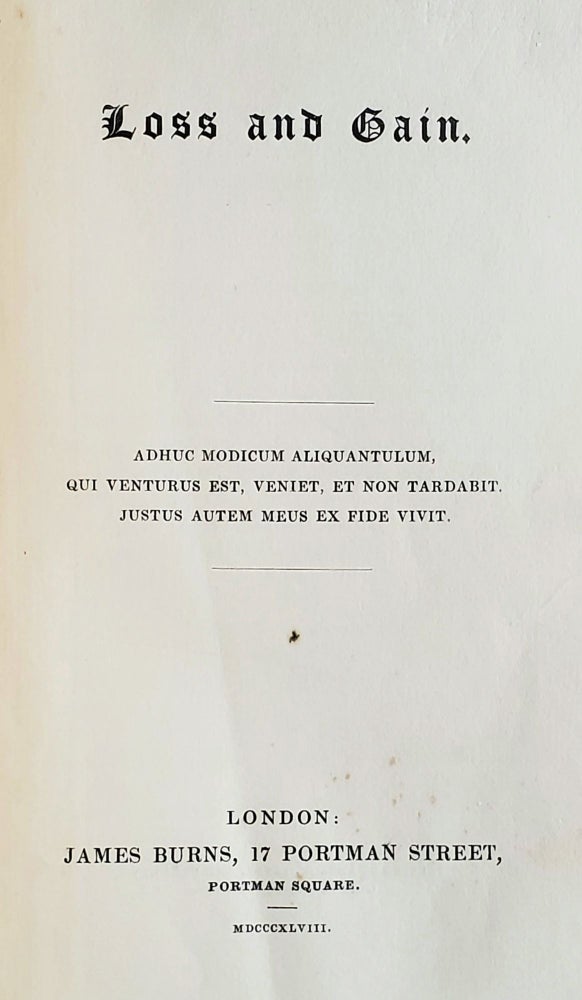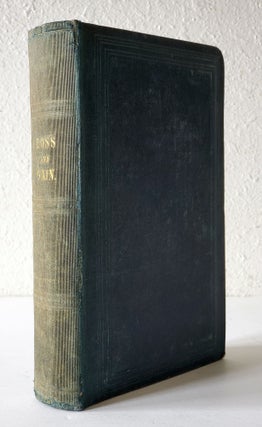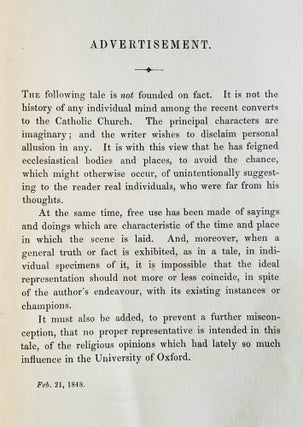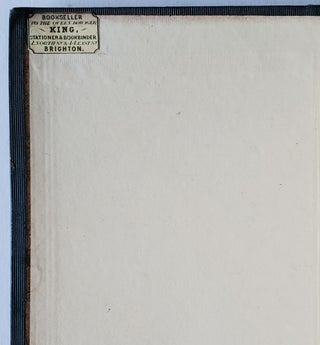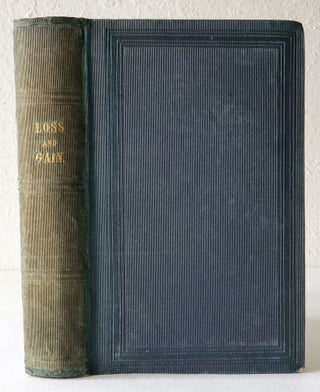Loss and Gain
London: James Burns, 1848. First edition. Contemporary green cloth (7 inches tall), blind-stamped boards with gilt spine, yellow coated endpapers, uncut. Sympathetically rebacked with the original spine laid-down, small Brighton bookseller's ticket, ex-Convent library with two early ink inscriptions to blank flyleaf. A near-fine copy. Item #1389
"HE SEEMED TO FEEL A ROCK BENEATH HIS FEET; IT WAS THE SOLIDITAS CATHEDRAE PETRI"
Scarce first edition of John Henry Newman's conversion novel—the early fruit of the Oxford Movement and a landmark of the Catholic Literary Revival—now quite uncommon in a contemporary Victorian binding.
The text is preceded by a brief disclaimer ("the principal characters are imaginary") but the story of Charles Redding, a young Oxford student and his conversion to Roman Catholicism, is plainly based on Newman himself. Newman's autobiographical first novel, like "some of the earlier Catholic novels presented a leisurely, philosophical approach to fiction that interested readers who were steeped in religious discussion and controversy. John Henry Newman's Loss and Gain is the classic example of this type of fiction. Undoubtedly autobiographical, it is a slow moving intellectual novel" (Albert J. Menendez).
Loss and Gain was a collaboration between Newman and his publisher James Burns, the founder of Burns and Oates and "a man of faith, courage, and even holiness" (Tom Burns). Burns & Oates began in 1836, "as plain James Burns, bookseller and publisher, a respectable High Anglican firm in Portman Square. It ceased to exist as such when James Burns followed his friend Newman into the Catholic Church. In 1847, Newman helped to rebuild the business as a Catholic publishing house, Burns & Oates, with the gift of his novel Loss and Gain" (Tom Burns). "Newman had to take undertake the publication at his own risk" but his gift of the copyright for Loss and Gain paid off: "The work sold enough to warrant a smaller second edition in the same year" (Vincent Blehl) and it went through multiple editions and printings during Newman's lifetime. Burns and Oates prospered as the Catholic Literary Revival crested but, for James Burns "there was no family succession because his only son became a priest (and died while preaching in the Brompton Oratory) and his five daughters became Ursuline nuns" (Tom Burns). Menendez. The Road to Rome: An Annotated Bibliography, 1430; Blehl. John Henry Newman: A Bibliographical Catalogue of His Writings, A50a; Burns. The Use of Memory: Publishing and Further Pursuits.
Price: $950.00

